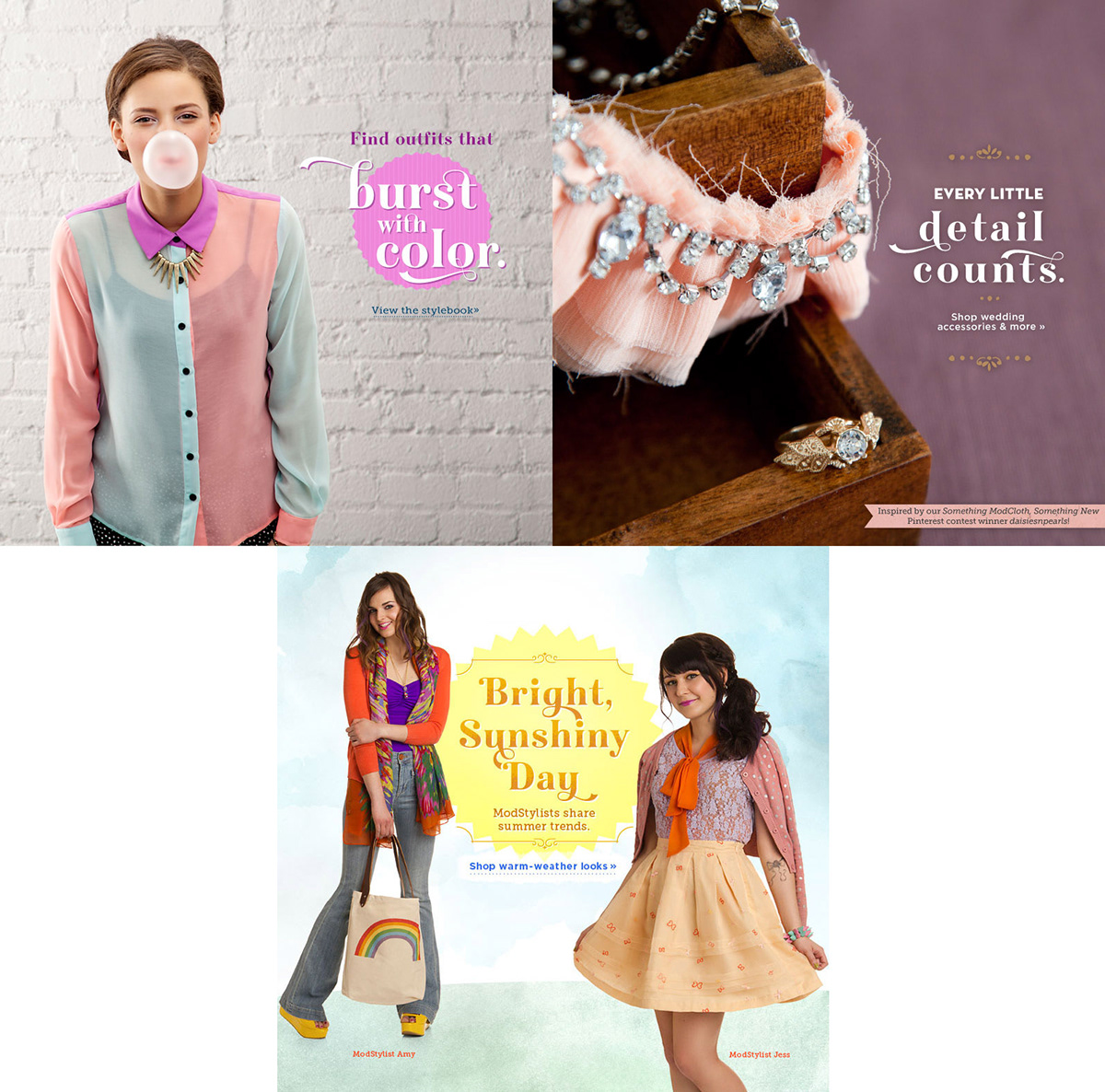As Design Manager for ModCloth, I started out leading a group of individual designers with varying styles and strengths. The design work that was already being done at ModCloth was really good, but it lacked a common thread (each designer worked independently, with little communication or collaboration). My first goal was to get the group acting like a team--without this, I knew we would not succeed. My second goal was to help all designers attain a minimum quality level and style I deemed appropriate for the brand (I knew they all had it in them to do this). Through feedback and discussion, we were able to get there.
The next step was to get this, now "team" of designers, to design consistently in order to strengthen the look and feel of what the company produced. In order to succeed with brand recognition, we needed to start thinking about the bigger picture of what we made, and how all the different pieces would fit together. This included thinking about the many different projects the Marketing and Editorial teams requested, and asking for ways to connect the dots where possible. On the creative side, I conceived the idea of a quarterly styleguide, which would allow us to remain flexible and keep the design style ever-evolving, while allowing us to intentionally keep the design elements we considered to still be relevant. Prior to this, the monthly stylebook slideshow was the only piece considered in terms of styling--this new approach allowed us to consider all projects, and the stylebook was to be one of the projects, and not necessarily the most important.
The place the disconnect was most obvious was the website's home page--when we started running 5 hero images simultaneously (increased from just 1 stylebook hero image), I noticed that although each hero looked good independently, they did not work as a group. To ease into the concept of harmony, we worked with what we could within our realm as a team of designers--we used typography to create a consistent balance between each hero. This allowed the creative concept for each hero to remain independent, but helped each hero feel like part of one brand story.
Here are some examples of the heros working well as a group:
The next step was to get this, now "team" of designers, to design consistently in order to strengthen the look and feel of what the company produced. In order to succeed with brand recognition, we needed to start thinking about the bigger picture of what we made, and how all the different pieces would fit together. This included thinking about the many different projects the Marketing and Editorial teams requested, and asking for ways to connect the dots where possible. On the creative side, I conceived the idea of a quarterly styleguide, which would allow us to remain flexible and keep the design style ever-evolving, while allowing us to intentionally keep the design elements we considered to still be relevant. Prior to this, the monthly stylebook slideshow was the only piece considered in terms of styling--this new approach allowed us to consider all projects, and the stylebook was to be one of the projects, and not necessarily the most important.
The place the disconnect was most obvious was the website's home page--when we started running 5 hero images simultaneously (increased from just 1 stylebook hero image), I noticed that although each hero looked good independently, they did not work as a group. To ease into the concept of harmony, we worked with what we could within our realm as a team of designers--we used typography to create a consistent balance between each hero. This allowed the creative concept for each hero to remain independent, but helped each hero feel like part of one brand story.
Here are some examples of the heros working well as a group:

the first foray into aligning design styles

example of two stylebooks (top row) running simultaneously--each needed to stand out as it's own concept, yet work harmoniously on the website's home page

one stylebook, two supporting stories
Here is an example of good designs working independently, though falling a bit short as a cohesive group:


